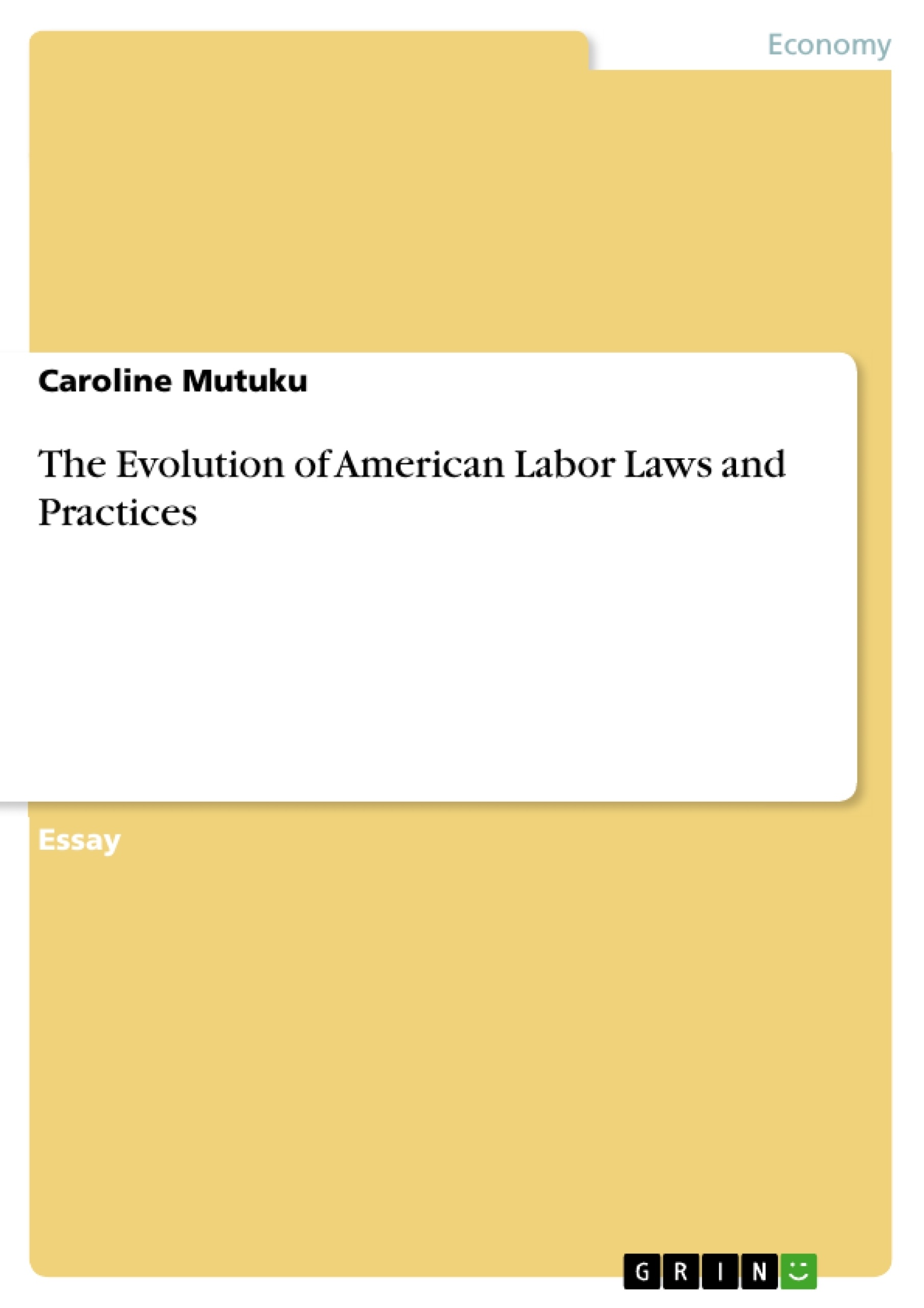Senator Robert Wagner in support for the National Labor Relations Act argued that “democracy cannot function only in polling booth, but in extension to workplaces where men and women earn their daily bread”. Senator Robert’s statement summarizes the need for to labor laws and practices that do not only favor the employers but as well the employees. Americans workers understood this since the founding of the nation. They have been in constant fights to have their rights since then.
This research paper traces the evolution of American laws and practices to the present.
Inhaltsverzeichnis (Table of Contents)
- Dramatic Changes in the US Labor Market
- The Rise of Large-Scale Firms
- The Emergence of Labor Unions
- The Role of State Governments
- The Evolution of Labor Laws and Practices
- Regulation of Working Hours
- Legalization of Trade Unions
- The Use of Court Injunctions
- The 20th Century and Beyond
- The National Labor Relations Act (NLRA)
- Workmen's Compensation Laws
- Laws Against Child Labor
- Equal Pay and Gender Discrimination
- Racial Discrimination in the Workplace
Zielsetzung und Themenschwerpunkte (Objectives and Key Themes)
This research paper aims to trace the historical evolution of labor laws and practices in the United States, focusing on the transformations that have taken place from the post-Civil War era to the present. It examines the changing relationship between employers and employees, highlighting key events and legal developments that shaped the American labor landscape.
- The emergence and growth of labor unions
- The evolving role of state and federal governments in regulating labor practices
- The development of laws addressing working conditions, child labor, gender discrimination, and racial discrimination
- The impact of significant legislation, such as the National Labor Relations Act and the Civil Rights Act
- The ongoing challenges and debates surrounding labor rights and workplace equality in the United States
Zusammenfassung der Kapitel (Chapter Summaries)
The paper begins by outlining the dramatic changes in the US labor market following the Civil War, marked by the rise of large companies, the formation of labor unions, and increased state government intervention in employer-employee relations. The 1892 labor strike between the Amalgamated Association of Iron and Steel Workers and the Carnegie Steel Company exemplifies this period of intensified labor strife.
The paper then examines the evolution of labor laws and practices, focusing on the regulation of working hours, the legalization of trade unions, and the use of court injunctions against striking employees. It highlights the changing legal interpretations and the impact of key cases, such as the Commonwealth versus Hunt case, which provided legality to labor unions and strikes.
The paper delves into the 20th century and beyond, discussing the enactment of significant legislation, including the National Labor Relations Act, which granted stronger protections for unions. It also explores the development of laws addressing workplace safety, child labor, equal pay, and racial discrimination. This section highlights the impact of landmark acts like the Fair Labor Standards Act and the Civil Rights Act.
Schlüsselwörter (Keywords)
The paper focuses on the evolution of American labor laws and practices, encompassing the emergence of labor unions, government regulation, working conditions, child labor, gender discrimination, racial discrimination, significant legislation such as the National Labor Relations Act and the Civil Rights Act, and the ongoing challenges and debates surrounding labor rights and workplace equality in the United States.
- Arbeit zitieren
- Caroline Mutuku (Autor:in), 2018, The Evolution of American Labor Laws and Practices, München, GRIN Verlag, https://www.hausarbeiten.de/document/430695


